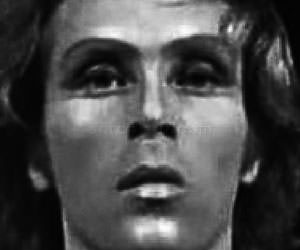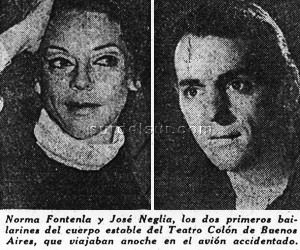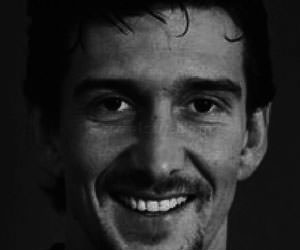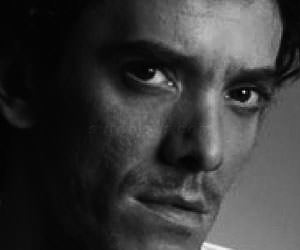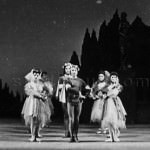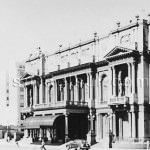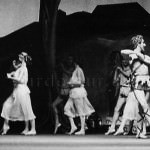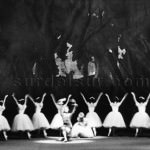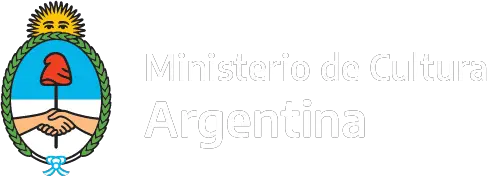Brief review of the trajectory of the leading figures of the Argentine ballet: Jorge Donn, Norma Fontela and José Neglia, Julio Bocca, Maximiliano Guerra, dancers excellence in Argentina and the world.
These emblematic figures of the Argentine Ballet, have in common to have left their mark on the Teatro Colon in Buenos Aires as part of Instituto Superior de Arte del Teatro Colon (Superior Art Institute of the Colón Theater) or leading figures in your scenario. Their names have been intimately linked to the history of classical dance in our country.
Jorge Donn
He born in the Palomar, Buenos Aires, Argentina in 1947. Regarded as one of the most remarkable figures of contemporary dance, this Argentine dancer was at the same time the performer of and inspiration for Maurice Béjart’s creations. He started his training in Buenos Aires, in the School of the Colón Theater.
As of 1963, he took part in the 20th Century Ballet. His career marked the different aspects of Maurice Béjart’s choreographic art. On the other hand, he performed the most remarkable choreographs and was the partner of the great Russian “étoiles”: Maya Plissetskaya and Natalia Makarovna.
From 1976 he was the artistic director of Ballet del Siglo XX . Among his most memorable work was the most widespread the Bolero by Ravel (1979) and his participation in the film Les uns et les autres (The one and the other) by French director Claude Lelouch.
In 1988 he formed his own company, L’Europa Ballet .
He died in 1992 in Lausanne, Switzerland
Norma Fontenla y José Neglia
Were leading figures of the Argentine ballet and members of the ballet company of the Colón Theater. They shared the stage as dancers, success and also a tragic fate.
On October, 10, 1971, a bimotored Cesna plunged down into the waters of Plata River. The accident took ten victims, all of them members of the ballet company of the Colón Theater.
The main dancers, Norma Fontenla and José Neglia died that night, together with the other dancers, Rubén Atanga, Héctor Zambrana, Margarita Fernández, Marta Raspanti, Carlos Santamarina, Sara Bockowsky and Carlos Schiafino. They were flying toward the city of Trelew, where they would perform in the Spanish Theater.
The news shocked especially the artistic community and logically so, since the tragic accident had cut off the life of two of the best Argentine dancers, leaving many brilliant careers incomplete. That night, a strange turn of fate decided that Argentine dance should be affected by a loss which was undoubtedly one of its most important ones in its history.
Julio Bocca
He was born in Munro, Buenos Aires, Argentina in 1967. He began his dance studies when he was four under the supervision of his mother. He then continued his training in the Buenos Aires Superior Art Institute of the Colón Theater.
Before ending his studies in the Institute, he was signed up as First Dancer by the Teresa Carreño Foundation in Venezuela and by the City Hall Theater of Río de Janeiro.
In 1985 he took part in the Moscow Fifth International Ballet Contest and got his gold medal in his category. Since then, his career acquired an international dimension. In 1987 he was signed up as first dancer by the American Ballet Theater, a company to which he still belongs.
Julio Bocca has danced as a guest artist in the main companies of the world, including the London Royal Ballet, the Moscow Bolshoi, La Scala of Milano, among others, in choreographs especially created for him. Besides, he participates every year in the major Ballet Galas and Festivals. In 1990, he created the Argentine Ballet, made up by young Argentine dancers.
His successful career, culminated in his farewell to the world stage, between 2005 and 2007. Finally makes his farewell as a dancer, in a memorable performance outdoors at the Obelisk of Buenos Aires, Argentina.
In 2009 he moved to Montevideo. In 2010 he received the offer by the own President Jose Mujica to get in front of the national dance company. In 2011, on the 75th anniversary of Sodre National Ballet, he joined as artistic director, developing an intense activity. Since then he has premiered at the National Auditorium Sodre, more than twenty selected works from the great classical ballets such as Giselle, The Nutcracker, Le Corsaire, Swan Lake, La Sylphide, The Merry Widow and La Bayadere
Maximiliano Guerra
Born in Buenos Aires, Argentina on May 5, 1967.
In his beginnings this Argentine artist was a member of the Ballet of the Argentine Theater of La Plata.
Since 1985, he is a dancer of Colón Theater in Buenos Aires. In 1987 he won a silver medal in the New York International Contest, and in 1988, he won the gold medal of the Varna International Contest.
He joined the English National Ballet (ex London Festival Ballet) in the capacity of “Principal Dancer”, taking part in the Company’s major productions. In 1989 he made his triumphant reappearance in Buenos Aires, with the full version of The Swan Lakein the Colón Theater.
He danced with Maya Plisetskaya, Alessandra Ferri and Carla Fracci. He was elected in 1997 Dancer Emeritus Colon Theater.
In 1999 he founded and directed the Ballet Mercosur, in Argentina.
In February 2015 Maximiliano Guerra was appointed general and artistic director of Colón Theatre
Bibliography:
Colón Theater: Instituto Superior de Arte

